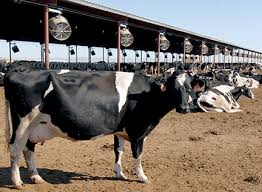Dairy sector coming out of the woods
THE dairy sector’s performance from 2015 to the present seems to have laid a strong foundation for the argument that it is finally on a growth trajectory that will see it out of the woods after years of performing inconsistently.
In 2015 the total number of cows in milk was 15 611 and these were producing a total of 57,5 million litres of milk, with the number rising to 16 835 cows the following year and these yielded 65,4 million litres of milk.
The number was to rise again in 2017 to 17 325 cows in milk that produced 66,4 million litres with the trend continuing along that route to see 2018 recording 17 968 cows in milk that produced 75,4 million litres.
But the sector was not done yet!
In 2019, the figures climbed to 19 022 cows in milk that produced 79,9 million litres of milk marking a six percent rise in milk production from 75 422 158 litres in 2018 to 79 896 215 litres in 2019.
Essentially, the report on the 2019/20 second round of the crop and livestock assessment indicated that production in the dairy industry had continued to show growth although the current production levels are still short of the 120 million litres that can meet the national requirements that are still to be achieved.
At the moment the dairy herd stands at 39 856 animals with 19 022 milking cows, while the country needs at least 32 000 to meet the national target for milking cows that will make it possible for the harvesting of enough milk to meet the national requirements or even surpass. The average production per cow per day was recorded at 14 litres at the time of the assessment.
However, a fact worth noting is that the smallholder dairy sector is still contributing about four percent of national milk production – something that has been blamed on the high costs of breeding stock, stock feed and the procurement of veterinary drugs.
Four percent is not a good figure looking at the situation from a business perspective in which the farmers should be targeting making profits from every enterprise they embark on.
Smallholder farmers usually face a plethora of problems if they want to do activities such as dairy farming and serious horticulture for income generation.
For those in the dairy sector, the problem starts with their inability to secure chilling facilities to preserve the milk to enhance its shelf life while they prepare to go to the markets, which in most cases are situated far away, forcing them to rely on local sales.
Local sales are usually not very rewarding, as the farmers have to contend with storage losses and low prices that are arrived at after extensive bargaining.
They also face the challenges from the unavailability of milk collection centres where the milk can be stored safely awaiting delivery to Dairibord Zimbabwe Limited (DZL), which in most cases is the key buyer for most of the dairy farmers’ produce.
DZL is buying a litre of milk at $35 – an amount most farmers feel should be raised to $50 to cushion them from the volatile economic trends precipitated by the parallel market exchange rates.
In the absence of other clearly defined markets besides DZL and the general lack of storage facilities aside, most of the farmers end up selling the product at give-away prices to escape storage losses and this milk is also captured in the national figures.
The majority of the smallholder farmers do not have high-milk yielding breeds such as Holstein Friesian, and even if they get them, chances are very high that the cows will not produce to maximum levels because they are not adequately equipped to secure the required feeding materials.
Water problems are also rampant for most of these farmers, as they rely on sources such as rivers and dams, which are no longer reliable in the face of the growing climate challenges.
Dairy cows are not expected to travel long distances in search of water, as this is known to have a negative effect on the total amount of milk they will produce.
This is, however, the most rampant scenario with most smallholder farmers because they do not have their own reliable water sources.
The farmers also have to contend with very high feed costs, as most of them do not earn much to finance the procurement of the feeds and take care of other cattle maintenance costs as well.
Some retail shops are selling feeds for between US$12,50 and US$13, that is roughly the equivalent of $1 500 or more using unofficial exchange rates, which most farmers find difficult to match.
If calculated using the official bank rate, the feeds could be secured at a cost of $1 050.
It is fast becoming necessary for farmers to grow crops for fodder production later and cut on the costs of procuring feeds, yet the usual problem lies with their inability to mobilise resources for the programme, especially as they also struggle to do so for their own household consumption.
The farmers’ biggest undoing is usually the lack of knowledge and unavailability of facilities that they can use for value addition and make products such as cheese and yoghurt that usually have a ready market even in their communities in the event that they cannot send them to the formal markets.
Formal market opportunities are always restricted, while the available markets are in most cases situated far away, which increases chances of the milk losing quality before it gets there in the absence of proper storage and transport facilities.
On the other hand, the majority of the farmers cannot meet DZL’s bio-security requirements so they are in most cases stuck with their milk and cannot break into lucrative markets, which forces them to sell their milk at low prices to escape losses since milk is highly perishable if not stored under the right conditions.–herald.cl.zw








